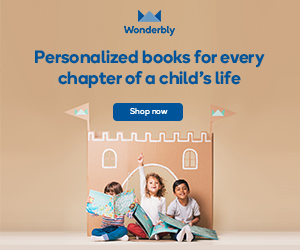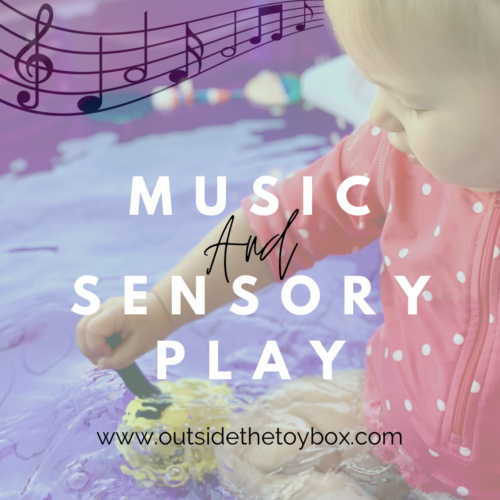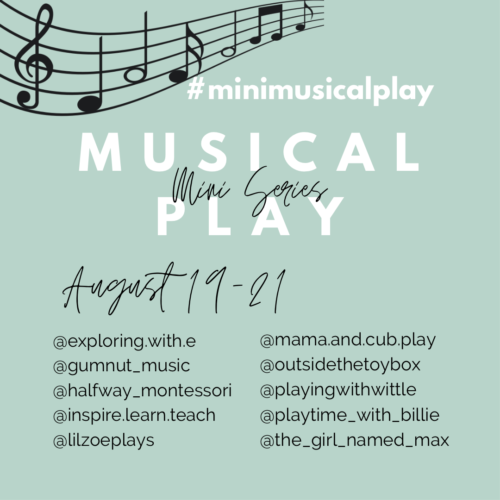Even though my dad was a musician and I married a musician, I do not have a musical bone in my body. I sing off key. I cannot keep a rhythm. I have only a handful of children’s songs memorized (and most of them are the classics).
Does that stop me from immersing my toddler in music? No way!
The beauty of children is they don’t care if you sing off key or forget the words to a song. In fact, most of the time I sing along to music coming from the speakers rather than from my own memory or I simply make up songs.
Toddlers are not particular about what instruments you use. You don’t even need instruments, you can make instruments from nearly anything around. The kitchen is a great place to find some things to make sound. Classic pots and pans will work just fine.
Teaching toddlers music does not involve reading sheet music or teaching notes. They simply enjoy experimenting with sounds. Introducing them to a wide range of rhythms and beats will do for now.
So, take the pressure off yourself for being a perfect music teacher. You don’t have to be and that is the beauty of music with babies and toddlers.
Playful interactions with music, like in most if not all learning domains, is the best way to learn for infants and toddlers. So you may want to know how to play with your baby or toddler using music.
Here are some ideas to get you started as well as why they are beneficial in the long run.
Disclosure: This post may contain affiliate links, which means we may receive a commission if you click a link and purchase something that we have recommended. While clicking these links won’t cost you any extra money, they will help us keep this site up and running! Please check out our disclosure policy for more details.

Incorporating music for literacy development can involve the classic ABC’s, but there is much more to it. Children learn auditory processing, discrimination, and sequencing through hearing a variety of sounds (loud, quiet, fast, slow, scratchy, shouty, smooth, etc.).
Children also learn to listen. Listening and hearing are two separate things. Hearing is a natural thing, while listening takes practice and skill. We hear things all day long, but listening takes mental processing to distinguish a trash truck from a motorcycle.
These listening skills will be invaluable when your child begins to learn to read. To read you need to discriminate between sounds, then be able to sequence the sounds, and finally put the sounds together to make words.
The recognition of sound differences is similar to developing phonological awareness, or the ability to hear and distinguish between sounds in language. Phonological awareness is the foundation of reading. Reading takes lots of listening skills as well as auditory processing, discrimination, and sequencing.
When I was teaching reading in a preschool setting we started with non-letter sounds and sound discrimination. So, basically one of our exercises was presenting cards with different objects (ie. a clock, dog, cow) then saying the sound and having the child point to the card. Then we would do things like, “Show me moo, woof” and the child had to sequence the two sounds together. This would eventually move to letters and letter sounds.
Children who have been exposed to many different sounds have an enhanced ability to discriminate and then process those sounds, which later supports manipulating sounds and decoding words.
Nursery rhymes and books with lots of rhyme and repetition help young children identify sound patterns and anticipate what is coming next. These are all great literacy skills.
Babies and toddlers also learn lots of new vocabulary through music. It’s important to teach vocabulary in context, so songs, fingerplays, and songbooks are great for this. It’s always fun to learn something new through a song. Would you rather learn your body parts through simple point and memorize or through the song “Head Shoulders Knees and Toes?”

Nursery Rhymes

Alphabet books

Animal sound books


Sensory play is not limited to water or messy textures. Music can be just as beneficial as experiences with taste, touch, and sight. Engaging in all types of sensory play increases brain development and neural connections. See my post “What’s the Deal with Sensory Play” for more information on just how beneficial sensory play can be.
Exposing your child to all types of music and music play experiences can help build connections in the brain, especially if combined with other sensory play including touch, taste, sight, or movement.
We love combining music with sensory play. We have done this by playing music in the background or by combining sensory experiences. We have added musical instruments to water play and we have added instruments to dyed grain.
Both sensory activities provided new ways to experiment and experience sound. The way the grain feels dropping on a drum sounded like rain and the way the bell sounded when placed in and out of water was really interesting.
If you would like more sensory play ideas check out both:
Daily routines can become somewhat mundane, such as washing hands, cleaning up, taking a bath, etc. Transition between routines can become a source of major tension for toddlers.
That is why using music during transitions and routines can be a way to calm big emotions or to make the experience more pleasurable for all.
Here are some simple songs during routines.
Clean up time:
Clean up, clean up
Everybody, everywhere
Clean up, clean up
Everybody do your share
Hand washing song:
Tops and bottoms
Tops and bottoms
Inbetween, inbetween
All around your hands now
All around your hands now
Wash them clean
(You may need to repeat twice to get the full 20 second recommendation for scrubbing)
Bathtime:
We have some fun made up ones using Ruby’s nickname, so it is always fun to make some up especially incorporating their name.
We also sing 5 little Ducks with her rubber ducky, it goes like this:
5 Little ducks went out one day, over the hills and far away
Mommy duck called “Quack, quack, quack, quack”
And 4 little ducks came waddling back
(countdown until none of her ducks came waddling back)
Sad mommy duck went out one day over the hills and far away
Sad mommy duck called, “Quack, quack, quack, quack”
And all of her ducks came waddling back.
Bedtime songs:
Classic nursery rhymes or lullabies are perfect for bedtime. Or you can find other calm, slow songs to sing to unwind.
Twinkle, twinkle, Little Star
You are my Sunshine
Rockabye Baby
Hush Little Baby
Frere Jacques

Music is one way for children and adults alike to express themselves creatively. Babies and toddlers are just beginning to experience the world and thus they experiment with how things work, what things sound like, what things will do, how their body can move, what response they can get, etc.
By providing different types of music and allowing your toddler to dance, you are helping support their motor skills, coordination, and creativity. Plus, music and movement helps the brain and body work together.
Another way to enhance creativity with music is by using unconventional instruments. Pots and pans are a classic, but what about baking sheets and different types of spoons? We recently went on a walk at the park and collected some dried bean pods. These make excellent shakers.
Being creative about what you use to make sound shows your child that they are not limited to the common instruments for making music. They begin to think creatively and experiment with more objects for making sound.




Non-Plastic Instruments by Holly and Joe on Etsy.com
Montessori Wooden Instrument Matching Cards by Wood Contour Canada on Etsy.com
Melissa & Doug Musical Instrument Puzzle by Grateful Enterprises on Etsy.com

Not sure about you, but doing anything with some music makes it so much better. Being stuck at home during this global pandemic has been no joke. Parenting during a pandemic is not for the light of heart. There are what seem like endless amounts of hours to entertain a young toddler throughout the day. Then when you can’t go outside because it is too hot, it makes things so much worse.
I say all this because music has gotten us through when we are too bored, antsy, frustrated, or having other big emotions. I simply put on some Taylor Swift and Ruby starts to shake her booty.
As much as upbeat music can bring the mood up, lullabies and calm music can have a similar effect but can calm a mood rather than lift.
Music can truly act as a soundtrack to our lives. Ever listen to a song and it brings you right back to a specific moment in time, all emotions included? That is the power of music.
These are just a few of the benefits of music. There are many more ways music can impact a person’s life and learning. Head over to Instagram to check out a recent mini series I did with some brilliant moms for many more ideas and benefits using music with babies and toddlers.

How has music helped you or your little one? Let us know in the comments below.
Non-Plastic Instruments by Holly and Joe on Etsy.com
Montessori Wooden Instrument Matching Cards by Wood Contour Canada on Etsy.com
Melissa & Doug Musical Instrument Puzzle by Grateful Enterprises on Etsy.com

Share on facebook
Facebook
Share on pinterest
Pinterest
Share on email
Email
Share on print
Print
Please help to support my blogging efforts by sharing this post to others who may find some value in its contents.
Subscribe to Stay up to date
We will send you updates, but promise never to spam you (who has time for that?)
Follow us on Social Media to get daily play inspiration.





Yes! Love the remove the pressure part!
Totally! We parents put way too much pressure on everything we do with our children. Music should be fun, in fact, I believe all learning should be fun.
Geat blog! Teaching listening is so interesting, I’ve never thought of this before and is something I’ll focus on now
Awesome, glad you have found some value in this post! I remember learning about how music develops pre-literacy skills like listening and how it was so impactful for me. I’m glad to pass on that knowledge.